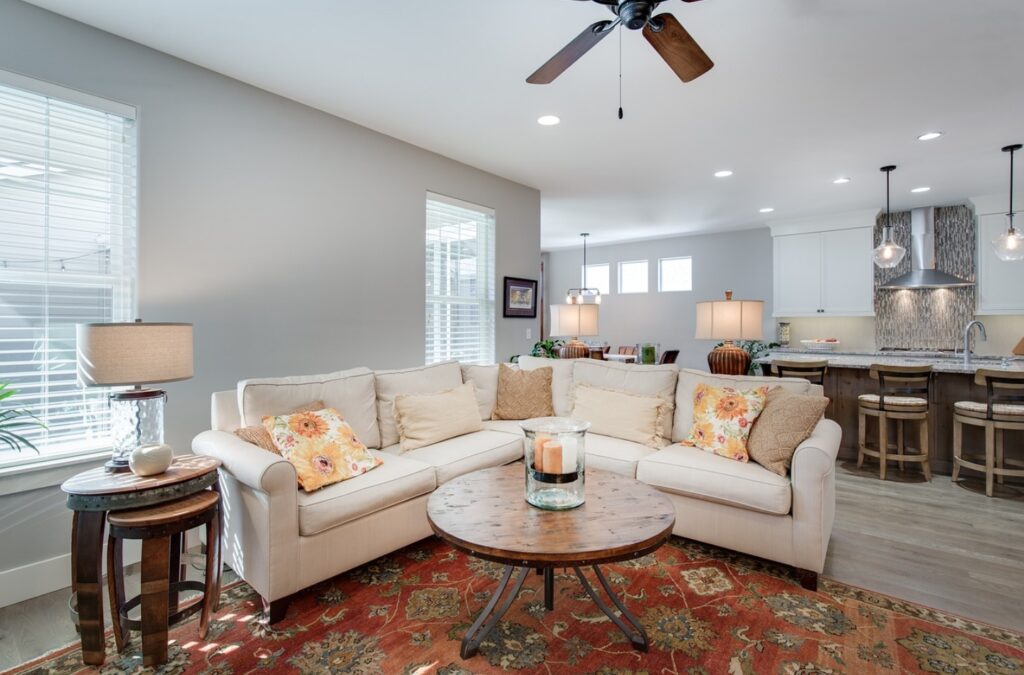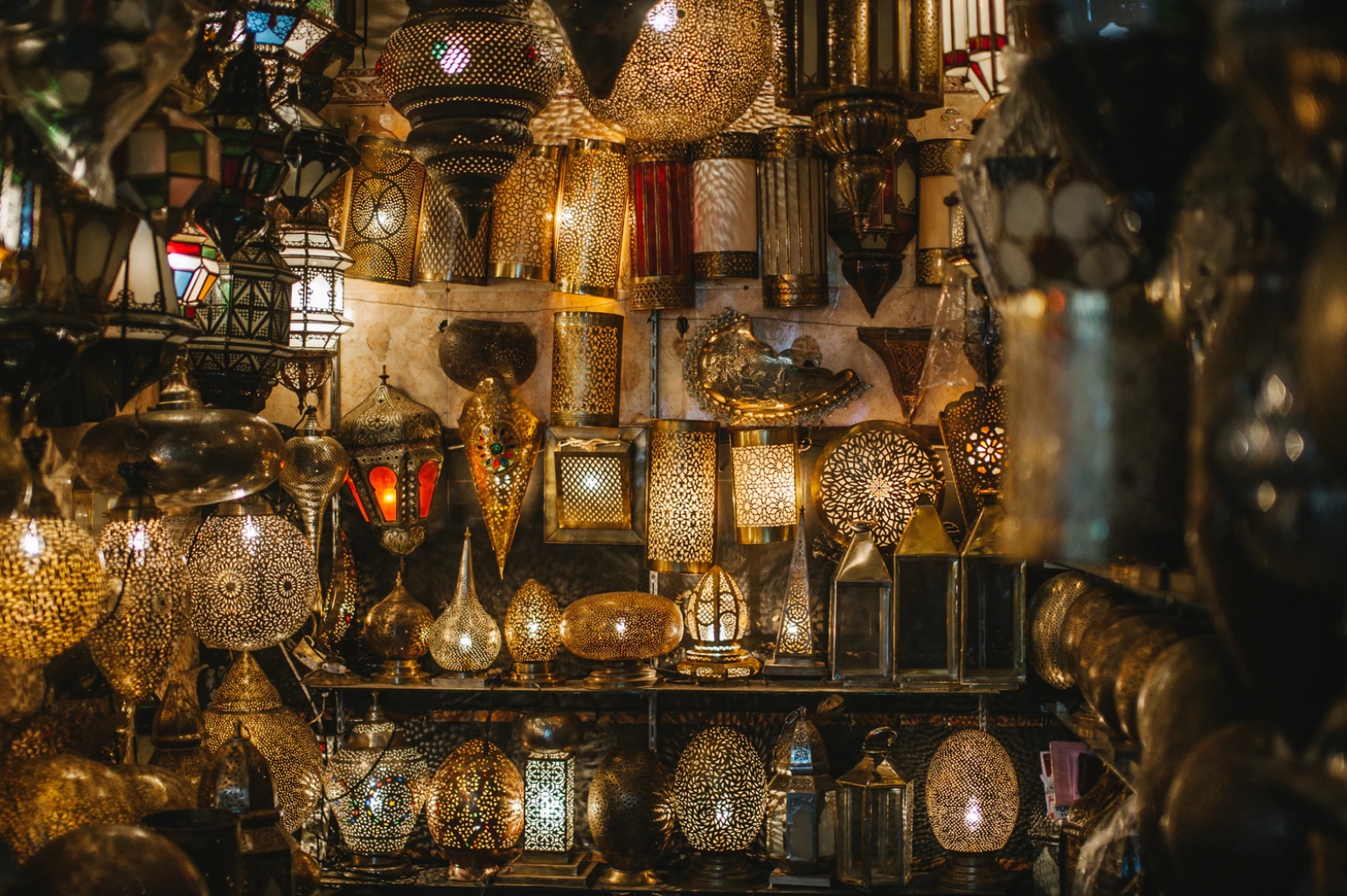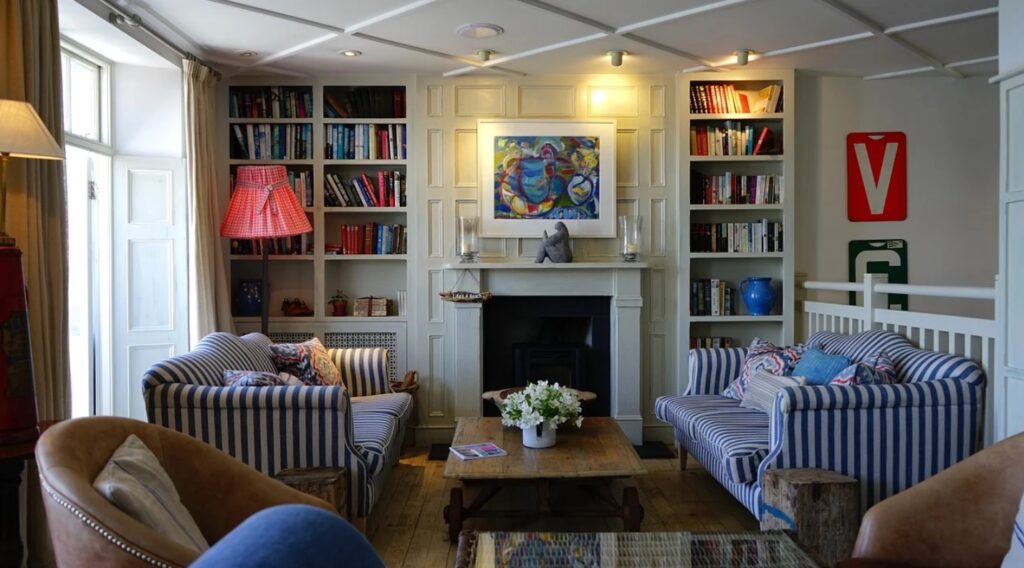When creating your interiors, you’ll often think about whether your shades need to match.
Your knee-jerk reaction is that they do. But when you look at pictures of desirable interiors in magazines, you often find that they use a bunch of shades that look nothing like each other, and yet the whole ensemble seems to work.
Shade selection is not an exact science. Sometimes matching shades is essential, but other times it isn’t. It all depends on the room, the variety of shades you use, and the look you’re trying to achieve.
The quick answer to this blog’s title is that you don’t have to match all your shades in a room perfectly. They can be different sizes and shapes and, in some cases, from different eras. You’ll often find that choosing non-matching shades helps make your interiors look more elegant and refined – artistic even.
In most cases, though, you’ll need to ensure that some matching elements link all your shades, such as the shape, color, material, or art style. Otherwise, you’ll wind up with an interior that looks messy and confused.
The purpose of this article is to provide you with a more in-depth look at some of the lampshades styles available from Cook’s Lamp Shader’s Co. and how they work together. By the end of it, you should have a good sense of how to pair shades effectively. Remember, you can always visit our store to see some of the principles we describe in this article in action.
Matching Different Shade Styles
This section covers special matching considerations for specific lampshade styles.
Mid-Century Shades
Mid-century shades embody the art styles from the preceding fifty to seventy years: art deco, Bauhaus, art nouveau, etc. Thus, they tend to pair well with many other styles from around the same period, particularly vintage shades.
Remember, a lot of mid-century art styles were essentially fusions themselves, incorporating different elements. An art deco interior, for instance, isn’t all about symmetry and “sameness.” Instead, it’s about finding different ways to evoke machine-like motifs. Thus, there’s nothing wrong with choosing a squat lampshade for your table lamp and an extended version for your floor lamp.
Mid-century styles also allow you to mix and match, though this is slightly more difficult. For instance, you could pair the neutral intricacies of an art nouveau-inspired shade with a slightly more extravagant art deco one. Alternatively, you might pair a modernist mid-century shade with a Bauhaus-themed contemporary.
Coolie Shades
Coolie shades look a bit like traditional hats worn by Vietnamese rice paddy farmers to protect them from the sun. They’re narrow at the top and fan out wider as they approach the floor.
Opportunities for experimentation abound here. Staying within the coolie style provides you with the most options for experimentation. You could use differently-colored contemporary shades to make your rooms appear less monolithic – great if you have multi-tonal décor. Alternatively, you could experiment with different heights, making some short and some tall, or vary the size but keep other attributes similar (unless you’re using a neutral color palette – in which case, you have more options).
Remember, you can get coolie chimney shades that feature special frames that permit chimney attachments if you want to use oil lamps.
Scalloped Lampshades
These days, we attribute scalloped lampshades to informal settings. Their playful rounded tops and bottoms make them ideal for kids’ bedrooms and playrooms. But the style goes back further than most people realize, all the way to Victorian times. Designers would create paneled frames and then lay silk and other materials over the top to provide light diffusion, often adding tassels and other embellishments.
Scalloped lampshades tend to work well with flare shades of the same color and size. They look a bit like grandma’s lampshades, allowing you to create beautiful retro rooms, evoking the best of the 20th century.
In general, scalloped lampshades tend to follow the same rules as coolie shades. Ideally, you should choose shades with matching elements that allow them to work together visually. Again, though, they don’t need to be identical.

Silk Shades
Silks shades are luxurious, decadent, and surprisingly easy to clean. And, thankfully, they work well when paired with each other.
The best way to match them is to choose a base color and then adjust the shade. Look for lighter and darker versions of the same tone – especially if you’re going for the neutral look. Creating contrast helps to break up the room while still permitting the interior to make visual sense.
Silk shades also pair well with different styles of the same shape and color. For instance, both coolie and scalloped silk shades pair well with each other.
Mission Lampshades
Mission lampshades have a square pyramidal shape and are usually made of glass, evoking the classic Tiffany style.
Tiffany lampshades don’t need to be identical, but matching them can be a challenge because of the complexity of their design.
One way to do it is to allow the style to vary while keeping the colors the same. For instance, you might look for mission shades featuring beige, green, and orange and then allow patterns to rotate through geometric and organic.
Another approach is to purchase shades from the same manufacturer because of the similarity of materials and colors. At Cook’s, you can view missions lampshades from the same vendors side-by-side, giving you a sense of how they might look in your interiors. You’ll often notice that the dark metal interlays between the colored glass provides a commonality that expands the number of matching models.
With that said, matching mission lampshades with other styles is a challenge. They will often clash, even with neutral coolie shades. They do, however, work well with many mid-century shades because they often share underlying artistic inspiration.

6 And 8 Sided Lampshades
6 and 8 sided shades tend to fit together well because of their shared geometric features. 6 sided lampshades, for instance, naturally complement ceiling and wall shades of the same design. You’re often able to change the color at will (so long as it doesn’t clash with your interiors), and the room will still make visual sense. You’re also able to vary the materials. For instance, you could pair silk and glass 6 sided shades, creating a fusion of styles for a contemporary interior. However, please note that this type of matching usually only works if the lamps are nearly identical in their other features.
String Lampshades
String lampshades are probably the most versatile of any lampshade, thanks to their disruptive, messy appearance. Your main concern isn’t matching them with each other but getting them to complement your current décor in a way that makes sense.
There are several types of string shades available. Some look similar to regular new lampshades, except individually-laid string, not fabric, covers their surface. Others have a more disruptive aesthetic where the vendor weaves individual cords in a criss-cross pattern across the frame.
If you stick with neutral colors, you can play around with the size and shape of string shades however you like. You could have a large shade for your free standing lamp and a much smaller one for your sideboard – it’ll work.
When it comes to multiple colors, you need to be a little more careful. Black, white, and grey work well together, but mixing reds with blues and purples can land you in trouble.
If you decide to get colorful shades, only vary the brightness of the color, not the shade, unless there are good interior design reasons to do so. Too much visual busyness will harm your aesthetic and make the room look ill-planned.
Flare Lampshades
Flare lampshades have a frame fans out faster at the bottom than the top, similar to a champagne flute. These shades often come in six, eight, or ten-sided versions and work well in mid-century homes because of their retro styling.
When matching flare lampshades, try to vary the size, but not the proportions. Upright lampshades can be larger than desk lamp lampshades, but the design shouldn’t be radically different. The rate at which they fan out should be the same, as should the number of panels or sides.
New Lampshades
Most new lampshades come in sets or “collections,” which helps people looking for matching sets. Here, the manufacturer does the hard work for you, allowing you to pick and mix particular models, knowing that you’re going to come away with something that works aesthetically.
Cook’s Lamp Shader’s Co. brings lampshade collections together on our showroom floor, allowing you to see how different models look when placed side-by-side. You’ll notice that manufacturers follow all of the rules we’ve outlined so far. Collection models usually have a similar color, style, or aesthetic that brings them together.
This aspect makes matching new lampshades relatively easy. So long as you are shopping within a collection, you get shades that work together visually.
Recovering Your Lampshades
If you’re having trouble making your shades match, Cook’s Lamp Shader’s Co. can help. If you like a particular frame but aren’t happy with the current color or material, we can recover shades according to your instructions. We carefully remove the old covering and replace it with a new one. Recovery lampshades cut the cost of your interior design and also allow you to tailor your shades to your specifications.
Cook’s Lamp Shader’s Co. is a third-generation lamp company, voted best shade shop by Detroit News/Free Press readers in 2003 and 2004, the only time the paper had the category. Come and visit us in-store and tap into our extensive shade-matching experience. We can recover shades, turning eyesores into fresh, trendy, and attractive new features for your interiors.
Reline Your Shades
Over time, the interior surface of lampshades can become damaged because of its proximity to the bulb. High-energy rays and heat degrade the fabric fibers’ organic structures, causing the shade to lose its original color. And when this happens, you get matching problems. Shades that once worked perfectly together now clash.
You can often see this effect in action in your own home. A floor lamp you rarely use might still look as bright as the day you bought it. By contrast, a nearby tabletop lamp you use all the time could look several shades darker, giving the room an unwanted dingy feel.
Again, Cook’s Lamp Shader’s Co. can help. We reline lampshades by removing the old material and replacing it with new. Relined lampshades look brighter and jollier, helping them match other shades in the room. If you want to reline shades, bring your lamp with you to our store, and we’ll refurbish it on site. It’s an excellent option for anyone who loves their existing shades and wants to restore them to their former glory.
Find Matching Shades Today
Cook’s Lamp Shader’s Co. wants to make finding matching lampshades a breeze. For that reason, we’ve developed perhaps the most impressive collection of shades in the whole of Metro Detroit, collecting styles together, letting you see what works and what doesn’t.
Our made in USA lampshades are constructed to exacting standards, meaning that you always get a high-quality product, whether you’re looking for something that looks like grandma’s shades or completely different. Our hex lampshades allow you to add a modern twist to your rooms, while our relined shades give you a chance to keep your original style while undoing the damage done by time.
If you want to learn more about how to match lampshades in your home, visit us in-store. We have more than sixty years in the industry and a team of highly experienced lampshade professionals, ready to answer all your questions. We can point you in the direction of the types of shades that work well together and advise on choosing specific décor themes.


